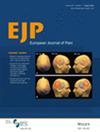Unhelpful Information About Low Back and Neck Pain on Physiotherapist's Websites
Abstract
Background
The internet is increasingly used as a primary source of information for patients with musculoskeletal pain. Private physiotherapy practices provide informative content on low back pain (LBP) and neck pain (NP) on their websites, but the extent to which this information is biopsychosocial, guidelines-consistent, and fear-inducing is unknown. The aim of this study was to analyse the information on websites of private physiotherapy practices in the Netherlands about LBP and NP regarding consistency with the guidelines and the biopsychosocial model and to explore the use of fear-inducing language.
Methods
The content of all existing Dutch private physiotherapy practice websites was examined in a cross sectional study design. Content analysis was based on predetermined criteria of the biopsychosocial model and evidence-based guidelines. Descriptive statistics were applied.
Results
After removing duplicates and sites without information, 834 (10%) of 8707 websites remained. Information about LBP was found on 449 (54%) websites and 295 (35%) websites informed about NP. A majority of websites (LBP: n = 287, 64%; NP: n = 174, 59%) were biomedically oriented. Treatment advice was given 1855 times on n = 560 (67%) websites. Most of the recommended interventions were inconsistent with or not mentioned in the guidelines. Fear-inducing language was provided n = 1624 (69%) times.
Conclusions
The majority of the information on the Dutch private physiotherapy websites was biomedical and not in line with the current guidelines and fear-inducing.
Significance
This study revealed that the majority of private physiotherapy practice websites that provide information on LBP and NP are inconsistent with the biopsychosocial model and current guidelines. This information has a negative impact on patients' knowledge, attitudes, beliefs, and expectations, potentially affecting treatment outcomes. Consequently, most physiotherapy practice websites are unreliable sources of information on LBP and NP for patients. There is an urgent need to implement strategies to make websites reliable and helpful sources of information.


 求助内容:
求助内容: 应助结果提醒方式:
应助结果提醒方式:


